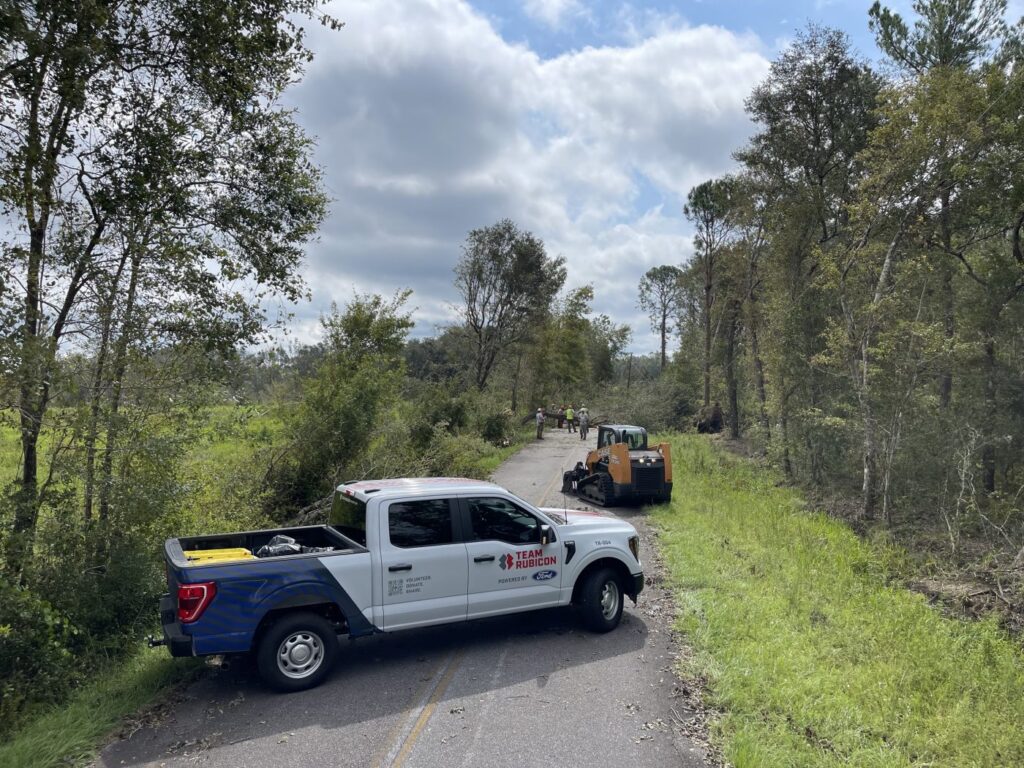Just hours after Hurricane Idalia made landfall near Keaton Beach, FL, around 7:45 a.m. EDT on August 30 with maximum sustained winds of 125 mph, Team Rubicon’s Route Clearance Teams began pushing into the state. In their path were downed power lines and countless trees.
The teams of sawyers and heavy equipment operators were there to help clear roadways for first responders, emergency vehicles, and the agencies that would be restoring the power grid. On Thursday, the two teams cleared 67 obstacles across Lafayette, Dixie, and Madison counties.

As one team made its way toward Perry, FL, they found that while major highways were clear, local roads were not. Virtually every single side road and secondary highway they came upon had all lanes completely blocked, or three-quarters of lane flow, explained Greyshirt Junior Nilz, who serves on one of the Route Clearance Teams. So bad were blockages that the team had to cut its way through.
“We were working our way towards Perry, but we couldn’t get there,” said Nilz from Madison County. “We just started cutting.”
It’s not Nilz’s first route-clearance-rodeo. He was in Florida doing route clearance last year after Hurricane Ian, too. The two storms were similar but very different.
“Ian looked like a bomb went off,” says Nilz. “But in terms of road blockages—like the amount of trees across roads and blocking access to emergency services, doctors, and places like that, it [Idalia] is way worse.”
The Greyshirt sawyers and heavy equipment operators conducting route clearance in Madison and Taylor counties have also been the first people many Idalia survivors have seen. “Somebody stopped us while we were opening up a road and told us that there was a side road off of the main road. There was an elderly lady who could get out of her driveway but couldn’t get down the road to get to the doctor’s office. So we went and opened that road up real quick.”
The damage caused by Idalia to homes and communities hasn’t ended, either. As Nilz spoke, rain fell all around.
“It’s hot here and still raining. We just had a big storm roll through this afternoon. People need tarps; people need …” Nilz trailed off in thought. “You know, it’s been a while since I’ve seen this much electrical line damage, and there’s no electricity. It’s still storming, and it is hot, and it’s humid.”
Rain falling into damaged homes that can’t run fans and generators can cause even more damage in the days and weeks after the hurricane.
In addition to doing route clearance, Greyshirts are also on the ground in Steinhatchee and Suwanee, Levy, Citrus, and Marion counties doing recon—evaluating damage to see where unmet needs remain and how Team Rubicon will be able to help. As a result of that intelligence, Team Rubicon launched its first Idalia response on September 1 in Taylor County. That operation is currently scheduled to run through mid-October.




